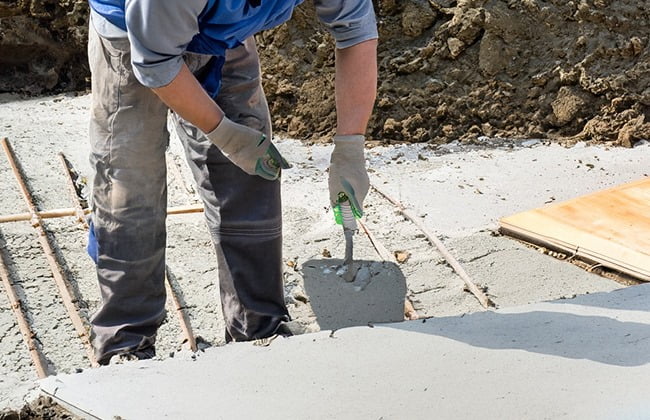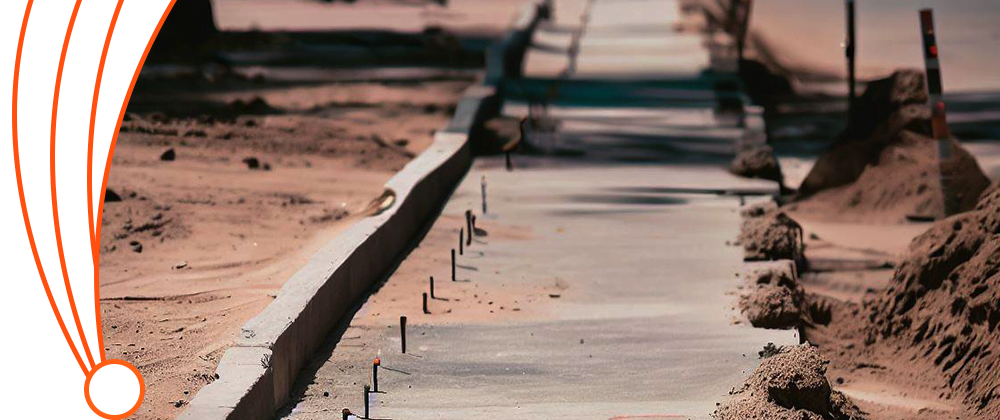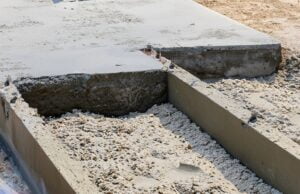Are your concrete sidewalks looking dull, dirty, and covered in grime? Power washing concrete sidewalks is a fantastic way to give them a fresh new look! Whether you’re a company or house owner, having clean, well-kept sidewalks can significantly improve curb appeal and foster a friendly environment.
In this blog post, we’ll share five useful tips for power washing concrete sidewalks effectively. So grab your power washer and get ready to transform those tired-looking paths into sparkling walkways that will impress everyone who passes by!
Choosing the Best Professional Power Washer for Concrete Sidewalks
When it comes to power washing your concrete sidewalks, you may be tempted to save some money by doing it yourself. However, investing in a professional power washer can make all the difference in achieving optimal results.
A professional-grade power washer is designed specifically for heavy-duty cleaning tasks like removing stubborn dirt and grime from concrete surfaces. It has higher pressure and flow rates compared to consumer-grade models, allowing for more effective and efficient cleaning.
By hiring a professional power washer, you not only get access to advanced equipment but also their expertise. These professionals have been trained on how to handle various surfaces without causing damage. They know exactly what pressure setting works best for different types of concrete sidewalks.
Using a professional service also helps you save time and effort. They arrive with all the equipment and cleaning supplies required for the task. You are relieved of the responsibility of obtaining and storing these things.
Additionally, if you hire a professional power washer, they will handle any upkeep or repairs that may be necessary while the job is being done.
Finding the Ideal Pressure Setting for Power Washing Sidewalks
To find the right pressure setting, start by considering the condition of your sidewalks. If they are heavily soiled or have stubborn stains, you may need to use higher pressure. However, if your sidewalks are relatively clean and just need a quick refresh, lower pressure should suffice.
The kind of nozzle you’re utilizing is a different aspect to take into account. While a wider spray pattern disperses the force over a larger area, a narrow spray pattern concentrates more force in a smaller area. Adjusting both the pressure and nozzle can help achieve better cleaning results without causing any harm.
It’s always recommended to do a test patch before starting on your entire sidewalk. This allows you to see how different pressure settings affect the concrete and adjust accordingly. Remember that every sidewalk is unique, so what works for someone else may not work for yours.
By finding the right balance between effective cleaning and protecting your concrete surfaces, you’ll be able to power wash your sidewalks with confidence!
Preliminary Testing: Why Starting with a Test Patch is Crucial
Before diving into power washing your entire concrete sidewalk, it’s important to do a test patch first. This will help you determine the right pressure setting and ensure that there are no adverse effects on the surface of your sidewalk.
To start, choose an inconspicuous area of your sidewalk to perform the test patch. Observe how the concrete reacts – does it clean up nicely or does it show signs of damage?
If everything looks good after testing with water alone, you can proceed with using detergent for deeper cleaning. Apply a small amount of detergent to another section of your test patch and gently scrub with a soft brush before rinsing off with water.
Selecting the Correct Detergent for Power Washing Concrete Surfaces
The detergent you choose will depend on the type of stains or dirt you are trying to remove.
For general cleaning, a mild detergent mixed with water should do the trick. Look for one that is safe for use on concrete surfaces and won’t cause any damage or discoloration.
If you’re dealing with tougher stains like grease or oil, opt for a degreaser specifically designed for concrete. These powerful detergents penetrate deep into the pores of the concrete, breaking down and lifting stubborn stains.
It’s important to follow the instructions provided by the manufacturer when mixing and applying detergents. Using too much can lead to residue buildup or even damage your sidewalk.
Wear safety gear, such as gloves, goggles, and protective clothes, if dealing with chemicals. And remember to thoroughly rinse off all traces of detergent from your sidewalk after cleaning.
Handling Cracks and Pits During the Power Washing Process
Be careful of any cracks or pits in the concrete when power washing your sidewalks. These imperfections can become bigger issues if not treated properly.
Cracks and pits in the concrete can trap water, dirt, and debris, making it difficult to clean them thoroughly with a power washer. Additionally, high-pressure water can actually worsen these flaws and cause further damage to the surrounding areas.
To avoid exacerbating existing cracks or creating new ones, take some precautions before starting the power washing process. First, inspect the sidewalk for any visible cracks or pits. Mark them so you don’t accidentally apply too much pressure on those areas.
Next, adjust the pressure setting on your power washer accordingly. Lowering the pressure will reduce the risk of causing more damage to already weakened spots in the concrete.
When you begin power washing, be cautious around these vulnerable areas. Directing high-pressure water directly onto cracks or pits could widen them or even dislodge chunks of concrete.
Remember that prevention is key when dealing with cracked or pitted concrete sidewalks. Regular maintenance and repair work can help ensure their longevity and minimize potential future problems.
Section-Wise Power Washing Techniques
One of the most important tips for power washing concrete sidewalks is to wash in sections and start from the top. This method ensures that you clean your sidewalk thoroughly and efficiently.
Starting from the top allows any dirt or debris to be washed downward, preventing it from spreading back onto areas you have already cleaned. It also helps you maintain control over the water flow and pressure as you work your way down.
Dividing the sidewalk into manageable sections not only makes the task less overwhelming but also allows you to focus on each area individually. This way, you can ensure that every inch of your sidewalk receives equal attention and cleaning.
As you move along, remember to overlap each section slightly with the previous one. This ensures a consistent cleaning pattern without leaving any spots untouched.
By following this method, not only will your concrete sidewalks look cleaner and more presentable, but they will also last longer by removing built-up grime that can cause damage over time.
Conclusion
Power washing concrete sidewalks can be an effective way to restore their appearance and remove built-up dirt, grime, and stains. By following these useful tips, you can ensure that your power washing project is successful and yields the desired results.
Investing in a professional power washer will save you time and effort while delivering superior cleaning performance. Make sure to choose a model that has adjustable pressure settings for precise control over the cleaning process.
FAQs
Q: What is the best pressure setting for power washing concrete sidewalks?
A: The ideal pressure setting depends on the condition of your sidewalks. Higher pressure may be necessary for removing stubborn stains, while a lower setting is suitable for general cleaning.
Q: Why should I hire a professional for power washing concrete sidewalks?
A: Hiring a professional ensures access to high-grade equipment and expertise, which can lead to more effective cleaning and prevent damage to your concrete sidewalks.
Q: How do I choose the right detergent for power washing concrete sidewalks?
A: Select a mild detergent for light stains or a specialized concrete degreaser for tougher stains like oil or grease, ensuring it is safe for concrete surfaces.
Q: What should I do before power washing concrete sidewalks to prevent damage?
A: Always perform a test patch to determine the appropriate pressure and check for adverse effects on your concrete sidewalks to avoid any damage during cleaning.
Q: How can I efficiently clean large concrete sidewalks with a power washer?
A: Divide the sidewalk into sections and start from the top, allowing dirt to flow downwards, which helps prevent re-soiling cleaned areas and ensures thorough coverage.





